Steemit Learning Challenge-S22W4; Rotator Cuff Tendonitis"
It’s another interesting class of learning. Below is my home work.
Rotator cuff tendinitis is a situation that occurs in the shoulder when the surrounding tendons of the shoulder is inflamed. The subscapularis, the supraspinatus, the teres minor and the infraspinatus are the four muscles that make up the rotator cuff and these muscles work hand in hand with other tendons and muscles of the joint of the shoulder to bring stability and enhance range of motion free from friction. When these tendons or muscles are inflamed, it leads to the condition called rotator cuff tendinitis.
There are some conditions that leads to rotator cuff tendonitis and these conditions includes;
- too much use or continuous use of the joints of the shoulder
- Participation in sports like weightlifting, base ball, swimming, golf, rowing etc
- Previous injuries such as shoulder bone dislocation or trauma can also lead to rotator cuff tendonitis
- Always taking poor posture such as slouching or poor egonomics
- Tear and wear related to age especially in aged people
- People with medical history such as diabetes or arthritis may develop rotator cuff tendonitis
- Impingement of the shoulder; that is when there is a compression or a pinching of the tendons of the shoulder which can lead to inflammation
- Lifting weights suddenly can also affect the rotator cuff tendonitis
- Irritation and inflammation can happen through bone spurs
Stages of Rotator Cuff Tendonitis
- The first stage is the mild stage and in this stage irritation and inflammation is noticed around the regions of the shoulder
- The second stage is known as the moderate stage and at this stage, when the patient is performing some motions such as shoulder extension, abduction or flexion, the patients will feel a snapping or clicking sensation around the shoulder joints.
- The third stage is the severe stage which is the last stage and here, the tendons of the rotator cuff is completely torn.
Rotator Cuff Tendonitis diagnosis can be carried out through different procedures:
- The physician will examine the patient physically by looking at the shoulder to see signs of swelling or malfunctioning, evaluating the range of motion for the shoulder through flexion, etc and checking for tender areas.
- Making use of MRIs, X-rays, and ultrasound to ensure it’s not caused by other conditions such as arthritis, ultrasound will helps to check the conditions of the muscles around the shoulder while the MRI gives a more detailed information about the rotator cuff and the surrounding tissues and tendons.
- Accessing the patients medical history, family and surgical history, symptoms history and how long it has been and also find out if the patient has had other injuries in the past and the occupation of the patient.
- Athrography or arthroscopy can also be used and this requires injecting an agent that is a constract into the joint of the shoulder so that a more detailed view of the images of the shoulder tendons can be gotten.
Some special type of tests can be done to acess rotator cuff tendinitis and they includes;
Neer test: This type of assessment is mainly used to diagnose rotator cuff tendinitis especially in Supraspinatus tendinitis. This is at the region just above the joint of the shoulder. In a positive case of Neer’s test, there may be presence of stiffness of the joint of the shoulder or a limitation in movement.
Speed test: Speed test comes into play when the conditions of the wear or tear in the bicipital tendinitis is been diagnosed. The patient feels pain in the bicipital groove with along side some discomfort when range of motion is applied in flexing the shoulder forward.
Hawkins Kennedy Test: Hawkins test is specially used in the diagnosis of Supraspinatus tendinitis. The patient flex’s the arm to about 90 degrees and reports if there is any discomfort or pain in the area especially the Supraspinatus region. Stiffness and limitation of mobility may be experienced at the joint of the shoulder with irritation and inflammation.
Yergasin test: The Yergasin test is used in diagnosing rotator cuff tendinitis that has to do with the bicipital tendinitis. The patient keeps the forearm in a supine position and reports if they feel discomfort or any pain in the bicipital groove region of the shoulder. Stiffness and limitation in the range of motion of the shoulder may be experienced.
Jobe's Test : Jobe test is used to specially diagnose the Supraspinatus tendinitis and it’s also called Empty can test. The patients arm is stretched in an abducted position while being examined by the therapist and the patients says whether they feel any discomfort or pain. Also range of motion may be limited and stiffness felt in the joint of the shoulder.
Scapular Squeeze
The scapular squeeze makes for the strengthening of the rhomboid and trapezius muscles of the shoulder. It’s performed by squeezing the two shoulders inward assuming a hand is placed in between, the squeeze is held for about 5-10 seconds and released and this repeated about five times
Cross Body Shoulder Stretch
This exercise helps to better the flexibility and the range of motion of the shoulder. The arm is stretched across the other side of the shoulder and held for about 5 to 10 seconds and released. The same is done for the other side of the arm and shoulder too for about five times.
Shoulder Isometric Exercises
These exercise helps to strengthen the muscles of our shoulder and they are known as resistance exercises. They are carried out by placing a towel in between our arm and the wall and pushing into the wall ensuring the back is straight with little or not movement. The same is done for the arm by pushing into the wall at 90 degrees with a towel in between with straight back and with little or no movement as in the picture.
Ensure to apply heat pads on the exercised parts for about 5 to ten minutes as this helps to ease the tension in the muscles.
I noticed the there was pressure on the back of my shoulder joints as I performed the scapular squeeze and shoulder joints of the two shoulders during the cross stretch and a relieve at those regions.
Thank you for this interesting class as I ask @anailuj1992, @fjjrg and @stef1 to join the challenge.
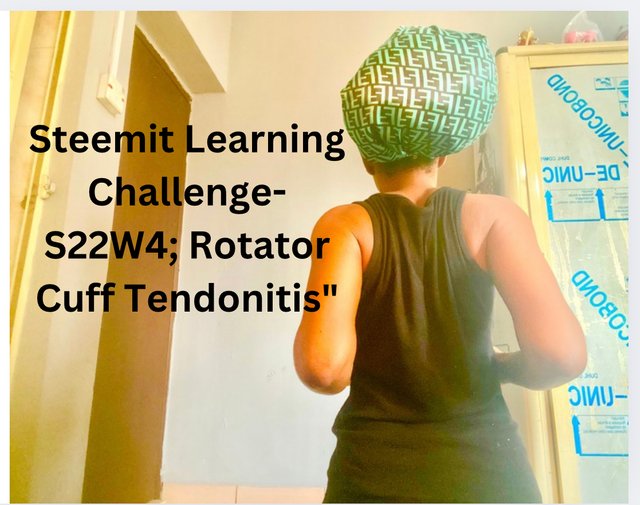
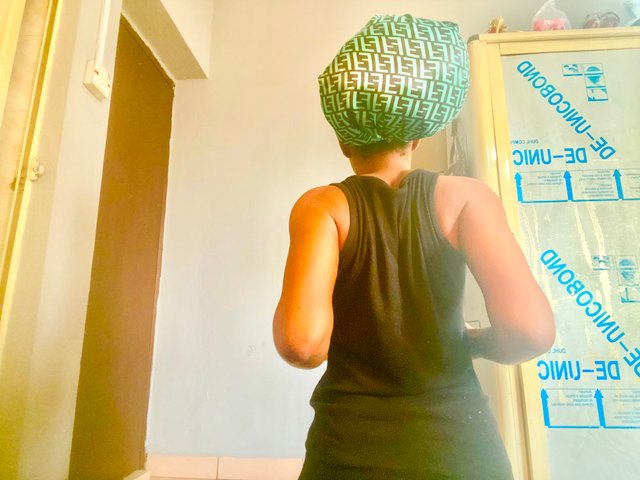
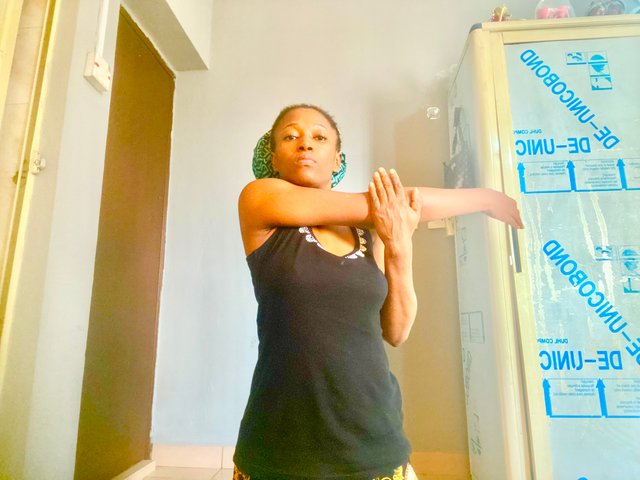
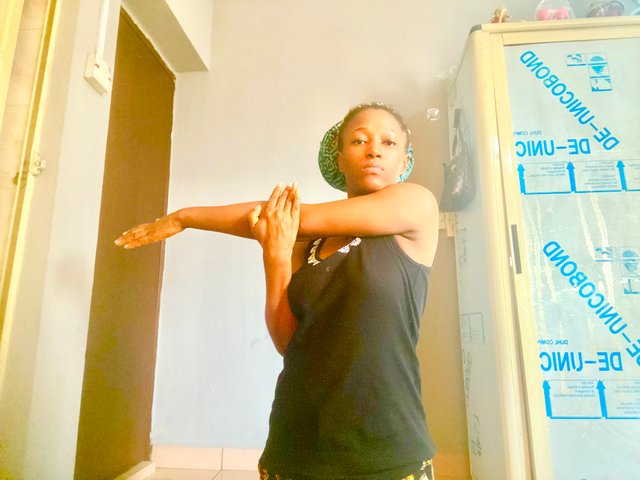
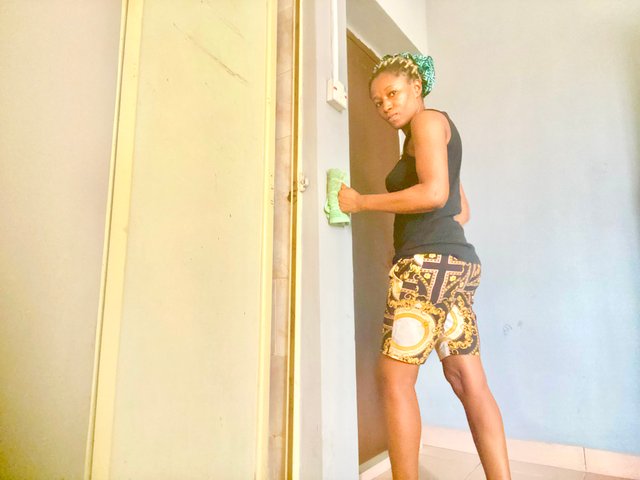
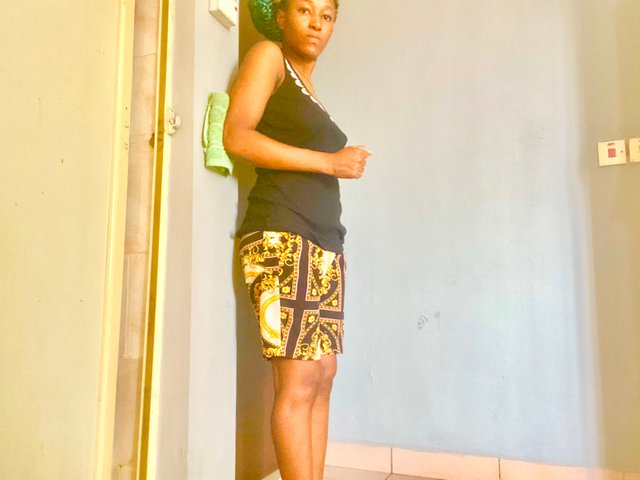
Hola amiga,
Un gusto leer tu participación donde se aprecia que llevaste acabo toda tu tarea, con la explicación de los términos y con la ejecución de los ejercicios mediante Fotografías,
Éxitos en el desafío,
Saludos Cordiales!!!
Thank you for understanding the lesson and sharing your assignment; I hope that you will enjoy this week's lesson and try to implement it in your life if you see any such case.
Observations
Task 1 (3/3)
You have shared a great knowledge about rotator cuff tendonitis, its symptoms, causes and it's stages. I appreciate your effort.
Task 2 (3/3)
In the second question, you tell us about how you have to assess a patient by doing physical examination, history taking, and investigations. That's good you add special tests and also explanation of both special tests and investigations. Excellent.
Task 3 (3.8/4)
You try the cross body shoulder stretch, shoulder isometric and scapula squeeze. You did the cross body shoulder stretch, shoulder isometric and scapula squeeze correctly. But it would be better to add the gif of exercise if you can't add its videos for better understanding of stretch timing. Always remember to apply heat pack in chronic condition and ice pack in acute condition before performing exercises to relax the muscles and reduce stiffness. I appreciate your efforts.
Overall you made a great attempt to answer all the questions. I appreciate your efforts. But next time try to avoid the above written suggestions. Keep learning and try to implement your knowledge to the people suffering from rotator cuff tendonitis or any type of shoulder issue. Thank you.
Correction noted. Thanks for the review